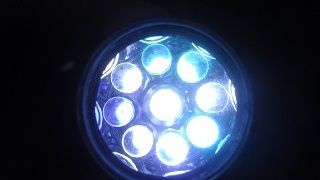From Guest Blogger "Edison Bulb": The Great Green Fleet–US Navy Embraces LED Lights for Energy Efficiency

An Energy-Saving Plan Six Years in the Making
In 2009, not long after SECNAV Mabus took office, he declared a set of goals to help the Navy reduce its energy use. His goals included reducing energy use in development and research, fuel use, and the induction of the “Great Green Fleet,” an armada of ships and aircraft that uses alternative energy sources. Mabus’ new decision to use LEDs instead of fluorescent and compact fluorescent lighting will help the Navy reach these goals.
The Navy Realizes the Benefits of Using LED Lighting
The amount of fuel used by each ship directly depends on its electrical efficiency. It takes fuel to keep the lights on, therefore energy efficient lighting allows ships to travel farther, stay at sea longer, and be operations ready at a moment’s notice. Mabus told reporters that “The move to LED saves between two and three percent of the total fuel usage for each ship.” This may not sound like much, but consider this: a single Arleigh Burke–class destroyer can burn about 756 gallons of fuel per hour. There are hundreds of ships in the US Navy fleet, 140 of which are currently deployed or underway. A 3% fuel savings for these active ships will save over 76,000 gallons of fuel a day . . . and all the Navy has to do is change the lights. This has already been proven, as well—Navy ships that have overhauled old lighting with LEDs have documented “a tidy sum of $150 million” in energy savings.
Mabus is also considering the safety of the men and women on his ships. Because LEDs last for an estimated 50,000 hours—five times longer than a fluorescent light—ships will need to replace their lighting far less often. Given how difficult it can be to access fixtures on a ship, less time balancing on ladders means fewer slips and falls, which are currently the highest recorded cause of shipboard injuries. In addition, fluorescent lights tend to flicker and buzz, which is not only a distraction, but also makes for unreliable lighting.
The US Navy says the new energy standards will help keep the military branch sustainable while “remaining the pre-eminent maritime power.” Mabus, the Navy, and the Department of Defense hope to reduce the Navy’s greenhouse gas emissions by 34% by the year 2020. They note that the energy efficiency of ships will also better prepare them for crises and allow them to dedicate funds to the research, development, and deployment of advanced weapons technology and security.
LEDs Already Being Used by the Military
The US military has already begun to implement LEDs in their ships and facilities. A military base in Virginia recently contacted Access Fixtures to provide turtle-friendly lighting for their coastal facility. Their old lighting was damaged, outdated, difficult to dispose of, and was at risk of affecting the wellbeing of local sea turtles. An Access Fixtures lighting specialist suggested amber LED lighting to meet all their specifications and ended up saving them . . . well, a boatload of money. The Navy added in April 2015 that “LEDs’ lower energy consumption means the bulbs will ‘pay for themselves’ in 1-5 years.”
In addition to the turtle-friendly lighting in Virginia, the US Navy has added LED lighting to more than 170 of its ships and fifteen of its athletic facilities. Mabus’ new plan will allow the Navy to take full advantage of what LEDs have to offer.
The Future of LED Lighting in the US Navy
The USS Paul Ignatius, an Arleigh Burke–class destroyer, will be the Navy’s first new-construction ship to fully (and exclusively) use LED lighting. It is expected to be completed in 2018; the Naval Sea Systems Command says that all future Arleigh Burke–class destroyers will use LED lighting. This is surely the beginning of a new era for both the US military and LEDs.
